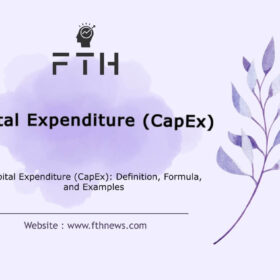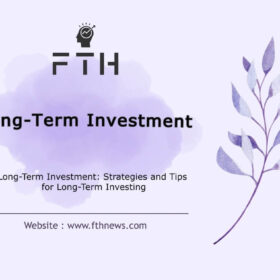
Short-Term Investments:Definition, Benefits, and Examples
Short-term investments, often referred to as marketable securities or temporary investments, form a critical component of financial portfolios. In this comprehensive guide, we’ll explore the definition, workings, advantages, and examples of short-term investments, shedding light on their importance for both individual and corporate investors.
What Are Short-Term Investments?
Short-term investments, often referred to as marketable securities or temporary investments, constitute a strategic facet of financial portfolios. These financial instruments are meticulously crafted to yield returns within a relatively brief period, catering to the preferences of investors seeking a balance between capital preservation and modest returns.
These investments boast a distinctive characteristic—swift convertibility to cash. This feature is especially appealing to investors who value liquidity and the ability to respond promptly to changing market conditions. The maturity period of short-term investments is a defining factor, typically ranging from a few days to a few years.
In the financial landscape, the term “short-term investments” encompasses a diverse array of instruments designed for easy conversion to cash, typically within a five-year timeframe. Notably, a significant portion of these investments finds themselves sold or converted within a more immediate window, often spanning from three to twelve months.
Investors gravitate towards short-term investments for various reasons. Beyond the aim of preserving capital, these instruments are sought after for their potential to generate returns that, while modest in comparison to some long-term strategies, provide a valuable balance of stability and profitability.
The spectrum of short-term investments includes but is not limited to Certificates of Deposit (CDs), money market accounts, high-yield savings accounts, government bonds, and Treasury bills. Renowned for their high quality and liquidity, these assets are considered pillars of a well-structured investment portfolio.
How Short-Term Investments Work:
Navigating the landscape of short-term investments involves a nuanced understanding of their mechanics, each type presenting a unique risk-return profile. The overarching goal, whether for companies or individual investors, is to safeguard capital while generating returns, mirroring the principles of a Treasury bill index fund or a comparable benchmark.
For companies, particularly those fortified with a robust cash position, the allure of short-term investments lies in the ability to maximize returns on excess funds. This can be achieved by strategically investing in stocks, bonds, or cash equivalents, surpassing the interest earned from a standard savings account. However, for an investment to be considered short-term, it must meet specific criteria: liquidity and an intended sale within a relatively short period, often around 12 months.
In the corporate realm, short-term investments manifest as marketable debt securities, such as U.S. Treasury bills and commercial paper. These financial instruments not only adhere to the liquidity and short-term sale criteria but also offer companies avenues to optimize their financial assets.
Exploring the diverse landscape of short-term investments reveals a spectrum of options, each characterized by its risk and return dynamics. Take Treasury bills, for example—an archetype of low-risk, low-return investments. Conversely, short-term bonds introduce a slightly higher return potential, coupled with a commensurate increase in risk.
Key to understanding the efficacy of short-term investments is recognizing the critical role of liquidity and accessibility. These factors endow investors with the ability to respond promptly to the dynamic shifts in market conditions, ensuring that their investment strategy remains agile and aligned with evolving financial landscapes.
In essence, short-term investments serve as dynamic tools, adaptable to the fluidity of financial markets. Their risk-adjusted nature, combined with the potential for swift liquidation, positions them as valuable assets in the pursuit of balancing capital preservation and generating meaningful returns.
Advantages of Short-Term Investments:
- Quick Liquidity:
- Definition: Short-term investments excel in providing swift liquidity, allowing investors to access their funds promptly. This feature proves invaluable in times of unexpected expenses or when capital needs to be redeployed swiftly.
- Lower Susceptibility to Market Volatility:
- Explanation: Short-term investments, by their nature, are less prone to the prolonged impacts of market volatility. The shorter holding period minimizes exposure to extended market downturns, providing a shield against sudden and unpredictable market shifts.
- Flexibility in Adapting to Changing Financial Goals:
- Flexibility in Action: The inherent adaptability of short-term investments empowers investors to realign their strategies in response to changing financial goals. Whether it’s seizing a new opportunity or adjusting to shifts in the economic landscape, short-term investments provide the flexibility needed for agile decision-making.
Disadvantages of Short-Term Investments:
- Limited Growth Potential:
- Inherent Constraint: One notable drawback of short-term investments lies in their limited growth potential compared to long-term strategies. While they excel in preserving capital and offering quick returns, the scope for substantial wealth accumulation is comparatively constrained.
- Inflation Erosion:
- Inflation Impact: The insidious impact of inflation can erode the real returns of short-term investments. Since these investments often offer conservative returns, the purchasing power of the gains may diminish over time, particularly when inflation is on the rise.
- Interest Rate Fluctuations Impact Performance:
- Vulnerability to Rates: Short-term investments can be sensitive to fluctuations in interest rates. Sudden changes in rates can influence the overall performance of these investments, affecting the yield and potentially introducing an element of uncertainty.
Mitigating Strategies:
Mitigating the inherent disadvantages of short-term investments requires a proactive and strategic approach:
- Diversification:
- Strategic Planning: Diversifying the investment portfolio across different asset classes can help offset the limited growth potential of short-term investments. A well-balanced mix of assets can enhance overall returns while maintaining the desired level of liquidity.
- Risk Management:
- Informed Decision-Making: An understanding of the risks associated with short-term investments allows investors to make informed decisions. Being aware of the potential impact of interest rate fluctuations and inflation enables the implementation of risk management strategies.
- Regular Review and Adjustments:
- Adaptability: Regularly reviewing the investment portfolio and making adjustments in response to changing economic conditions and financial goals ensures that the strategy remains aligned with the investor’s objectives.
In conclusion, while short-term investments offer notable advantages such as quick liquidity and lower susceptibility to market volatility, mitigating their inherent limitations requires strategic planning and a commitment to maintaining a well-diversified investment approach.
Examples of Short-Term Investments:
Treasury Bills (T-bills):
Characteristics:
Government-backed, low-risk, and short-term debt instruments.
Purchased at a discount and redeemed at face value, providing a secure and predictable return.
Role in Portfolio:
Ideal for investors seeking capital preservation and a low-risk addition to their portfolio.
Commonly used as a benchmark for short-term interest rates.
Certificate of Deposit (CD):
Characteristics:
Time-bound deposits with fixed interest rates, providing a reliable return.
Various maturity options, ranging from a few months to several years.
Role in Portfolio:
Suited for risk-averse investors looking for a predictable and guaranteed return.
The longer the CD term, the higher the interest rate, offering flexibility based on investment goals.
Money Market Funds:
Characteristics:
Mutual funds investing in short-term, low-risk securities.
Diversified portfolios may include government securities, commercial paper, and certificates of deposit.
Role in Portfolio:
Offers liquidity and stability, making it an attractive option for investors needing quick access to funds.
Yields are generally higher than traditional savings accounts.
Short-Term Bonds:
Characteristics:
Bonds with shorter maturities, balancing risk and return.
Typically less sensitive to interest rate changes compared to long-term bonds.
Role in Portfolio:
Provides a middle ground between the stability of traditional bonds and the flexibility of short-term investments.
Suitable for investors seeking a balance between capital preservation and modest growth.
Commercial Paper:
Characteristics:
Unsecured, short-term debt issued by corporations.
Typically used by companies to meet short-term funding needs.
Role in Portfolio:
Offers diversification by including corporate debt in the portfolio.
Investors should assess the creditworthiness of the issuing corporation to manage risk.
Considerations for Selection:
- Risk Tolerance:
- Key Factor: Assessing individual risk tolerance is crucial in selecting the most suitable short-term investments.
- Guidance: Government-backed options like T-bills may be preferable for risk-averse investors, while those comfortable with a slightly higher risk may explore short-term bonds or money market funds.
- Financial Goals:
- Alignment: The choice of short-term investments should align with specific financial goals.
- Example: CDs with varying maturities can cater to short-term and medium-term goals, providing flexibility in investment planning.
- Market Conditions:
- Dynamic Nature: Short-term investments are influenced by market conditions.
- Adaptability: Regularly evaluating market trends and adjusting the portfolio ensures alignment with prevailing economic conditions.
In essence, the landscape of short-term investments offers a diverse array of options, each catering to different investor preferences and financial objectives. The key lies in thoughtful consideration, aligning choices with individual circumstances, and adapting strategies to navigate the dynamic nature of the financial markets.
Real-World Example of Short-Term Investments:
Illustrating the practical application of short-term investments, consider Microsoft Corp.’s financial snapshot from its quarterly statement on Apr. 21, 2022. At that time, the technology giant disclosed holding a substantial $92.2 billion in short-term investments on its balance sheet.
The composition of Microsoft’s short-term investment portfolio provides insights into its risk management and capital optimization strategies:
- U.S. Government Securities ($78.4 billion):
- Role: A significant allocation to government-backed securities underscores Microsoft’s commitment to low-risk, highly liquid assets. U.S. government securities are renowned for their stability and are often considered a benchmark for risk-averse investors.
- Corporate Notes/Bonds ($11.7 billion):
- Diversification: Microsoft diversified its portfolio with corporate notes and bonds, indicating a willingness to explore slightly higher-yield options while maintaining a commitment to short-term instruments.
- Mortgage/Asset-Backed Securities ($590 million):
- Balancing Risk and Return: Including mortgage and asset-backed securities suggests a strategic balance between risk and return. These instruments, while carrying some risk, offer diversity and potential for modestly higher returns.
- Foreign Government Bonds ($501 million):
- Global Diversification: Microsoft’s investment in foreign government bonds reflects a global diversification strategy. This not only spreads risk across different economies but also leverages opportunities in international markets.
- Municipal Securities ($269 million):
- Community Impact: Investments in municipal securities indicate Microsoft’s engagement in supporting local communities. Municipal bonds are often used to fund public projects, aligning with Microsoft’s corporate responsibility initiatives.
- Certificates of Deposit (CDs) ($2 billion):
- Liquidity and Stability: Allocating a portion to certificates of deposit reinforces Microsoft’s focus on liquidity and stability. CDs provide a reliable return while allowing flexibility in managing short-term cash flow.
This real-world example demonstrates how a corporate giant strategically manages its short-term investments to balance risk, optimize capital, and align with its overall financial objectives.
Short-Term Investments vs. Long-Term Investments:
Contrasting Characteristics:
In the realm of investments, the choice between short-term and long-term strategies hinges on understanding their intrinsic characteristics and aligning them with specific financial objectives.
Short-Term Investments:
Short-term investments are purposefully acquired with the anticipation of swift liquidation. This inherent characteristic positions them as instruments designed for preserving capital while delivering quick, albeit modest, returns. Investors gravitate toward short-term options when the priority is to safeguard funds while maintaining the flexibility to capitalize on immediate opportunities.
Distinguishing Characteristics:
- Preservation and Quick Returns: The primary objective of short-term investments is capital preservation, coupled with the ability to generate returns promptly. This aligns with the investor’s need for liquidity and a cautious approach to market fluctuations.
- Timeframe: The holding period for short-term investments typically spans from a few days to a few years. This temporal brevity allows investors to respond swiftly to evolving market conditions and reallocate their assets as needed.
Long-Term Investments:
Conversely, long-term investments are crafted with the vision of substantial growth unfolding over an extended period. Investors in this category willingly accept higher volatility, understanding that potential long-term gains may compensate for short-term market fluctuations.
Distinguishing Characteristics:
- Growth Over Time: The central objective of long-term investments is to foster substantial growth. This prolonged trajectory allows investors to ride out the short-term market volatilities, with the expectation that the overall trajectory will trend positively over time.
- Holding Period: Long-term investments are fundamentally designed for a duration of at least a year. This extended holding period enables investors to weather the natural ebb and flow of the market, capitalizing on the compounding effect for enhanced returns.
Striking the Right Balance:
Building a resilient investment portfolio involves a delicate equilibrium between short-term and long-term strategies. While short-term investments provide immediate liquidity and flexibility, long-term investments offer the potential for compounded growth. Striking the right balance is akin to orchestrating a financial symphony, where the harmony between these two approaches fortifies the portfolio against unforeseen market shifts.
Understanding the investor’s risk tolerance, financial goals, and the immediacy of their needs is paramount in making informed decisions. A well-calibrated portfolio, encompassing both short and long-term investments, serves as a strategic compass for navigating the complexities of the financial landscape.
In essence, the dichotomy between short-term and long-term investments underscores the importance of adaptability and foresight in constructing a robust and diversified investment strategy.
Conclusion:
Effectively navigating the realm of short-term investments demands more than a cursory understanding; it necessitates a nuanced grasp of the available options and their strategic implications. By comprehending the definition, mechanisms, and real-world examples of short-term, investors can make informed choices tailored to their unique financial objectives.
In this dynamic landscape, the key to successful investing lies in crafting a well-thought-out strategy that harmonizes with individual risk tolerance and long-term goals. Whether it’s the quick liquidity of Treasury Bills, the reliability of CDs, or the diversified approach seen in Microsoft’s portfolio, the choices made in the short-term can have lasting impacts on financial stability and growth.
Remember, the journey of successful investing is an ongoing process of adaptation and strategic decision-making. Stay informed, stay vigilant, and let your investment strategy evolve in tandem with your financial aspirations.
FAQ
Short-term investments encompass liquid and low-risk financial instruments designed for quick conversion to cash within a few years. Examples include Treasury bills, money market accounts, and short-term bonds.
Yes, a short-term investment is considered an asset. It represents a financial holding with value that can be converted to cash, contributing to an individual’s or company’s overall financial worth.
Short-term investments on Quizlet typically include securities with shorter maturities, like Treasury bills, money market instruments, and other easily convertible assets designed for quick returns.
Consider investing in Treasury bills, money market funds, or short-term bond funds for a balance of liquidity and returns. Tailor your choices based on your risk tolerance and financial goals.
Certificates of Deposit (CDs), Treasury bills, and money market accounts are generally considered good short-term investments due to their stability and quick liquidity.
Allocate $5,000 in short-term investments like a high-yield savings account, short-term bond fund, or a combination of diversified options to balance risk and potential returns.














